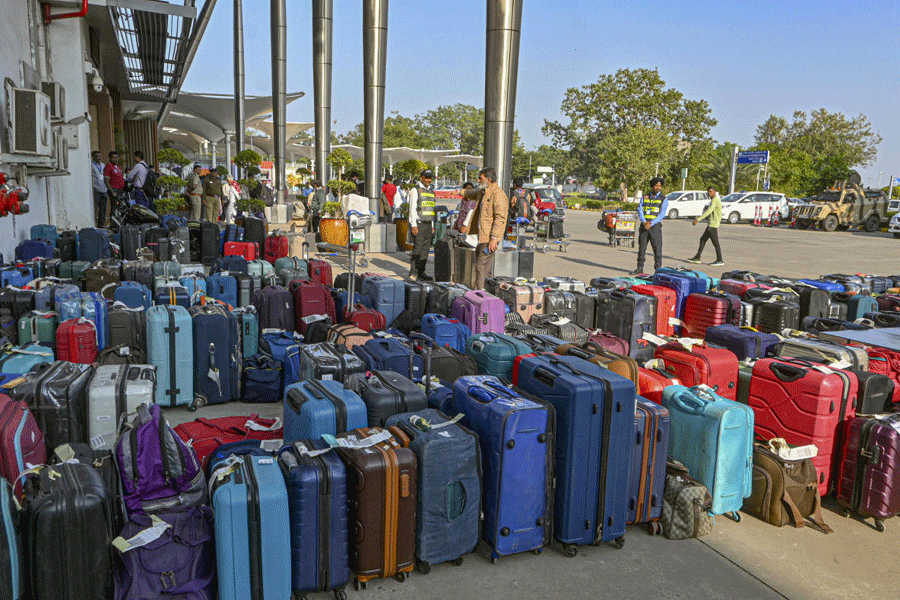 |  |
| Clusters of Jamruls hanging from trees in the township. (Right) Ready to eat Jamruls | |
Its fruits are enjoyed more for their crispy texture than for their flavour. The fruit in itself is watery and slightly sweet. Its skin is very thin, its juice colourless.
Commonly known as Water Apple or Java Apple in the rest of the world, Bengal knows this fruit as the good old Jamrul.
The Jamrul originated from the region between Malaysia and the Andaman & Nicobar Islands, where they grow as wild trees in the coastal forests. But it has now been introduced in many Asian countries including India.
This evergreen tree of the Myrtaceae family grows to a height of 5m to 12m. It has leathery leaves that are between 10cm and 25cm broad. It has a short trunk with wide-spreading crown and pinkish-grey flaking bark. In the middle of the fruit there may be one or two, somewhat rounded, seeds or no seed at all.
The yellowish-white flowers of the Jamrul are about 2.5cm in diameter and are borne at the branch tips or in a smaller cluster in axils of fallen leaves. They are fragrant with four petals and numerous stamens.
The attractive fruits resemble bell-shaped berries. When mature, the fruit will puff outwards with a slight concavity in the middle. The colour of the fruits ranges from white to pale green. Sometimes another variety of Water Apple — pink fruits with a spongy texture — are seen but these are not popular in Bengal.
Cultivation: This edible fruit tree is being cultivated in a limited scale in home gardens and small farms. In Salt Lake homes Jamrul trees are grown in backyards for their fruits as well as for ornamental purposes.
Considering its demand in the market, Jamrul cultivation is being attempted on a commercial scale now. Although Water Apple can grow on a wide range of soils, a fertile well-drained loamy soil is most suitable.
High atmospheric humidity is necessary during the flowering to fruit set period. Pits of about 1m x 1m x 1m in size are dug about 6m to 8m apart and filled about a month before planting. While digging, the top soil and subsoil should be kept separately. Pits should be filled first with sub soil, well mixed with 20kg of farmyard manure and then filled with top soil mixed with 10kg of farmyard manure, 500g superphosphate and 250g potash. Planting should be done just before rainy season and plants should be watered after planting.
Varieties: There is no specific variety of this fruit. However this may be divided in two main types - one having white fruits and the other with pink fruits.
Propagation: The Water Apple is propagated either by layering or by stem-cutting.
Tree management: Jamrul plants are generally trained according to their growth habits. Training is done to give the tree a proper shape and to develop a strong framework of branches. The top of the plant is headed back to 30cm to stimulate the growth of lateral branches at the time of planting.
Water Apples requires all essential nutrients for better growth and quality fruits. An adult tree should be fed 20 kg to 25kg of well-rotten cowdung manure every year. For every tree a 250g to 1kg mixture of oilcake and urea in a 3:1 proportion would be beneficial. But it should be applied after monitoring the growth rate. Manure can be applied in the beginning of monsoon.
Harvesting and fruit uses: The Water Apple comes into bearing after three to five years of planting in the field and the plants bear fruit for about 20 years. The yielding capacity increases with the age of the plant. But fruits on the trees do not reach the correct picking stage at the same time so pick the matured fruits first and give the others chance to reach maturity.
Jamruls must be plucked carefully, because bruised fruits develop rots easily. The fruits are generally served uncut and eaten fresh. In some places the fruits are used to make pickles. Their astringent flowers are said to stop fever and diarrhoea and they have low energy value. The carbohydrate level in ripe Jamruls is about 4g per 100g but there is fair amount of Vitamin C in it. Fruits are harvested only for local market.
The red hard wood of the Water Apple tree is used for constructing huts in the Andaman & Nicobar Islands.
To be continued
Send your gardening queries to saltlake@abpmail.com










